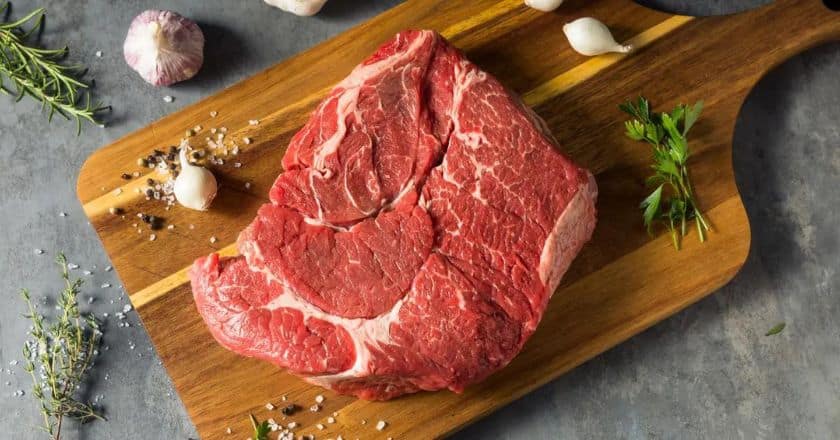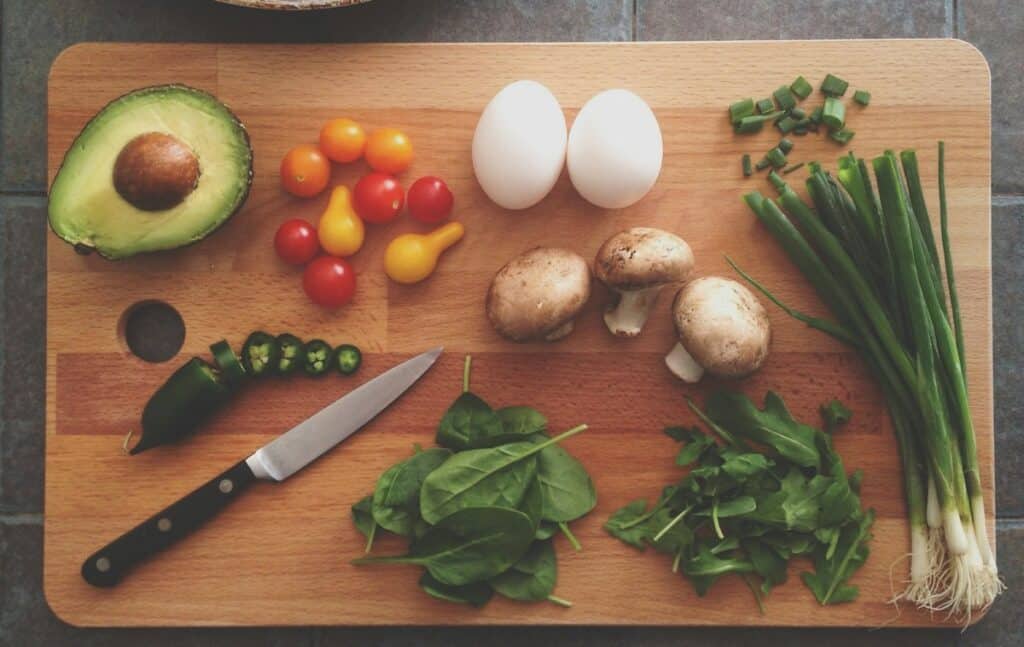Introduction
Beef chuck roast recipes, a beloved classic in many households, offers a flavorful and satisfying meal option that can be prepared in a variety of ways. Therefore, this guide will take you through everything from the basics of chuck roast to innovative recipes, ensuring you have all the knowledge needed to master this dish
What is a Chuck Roast?
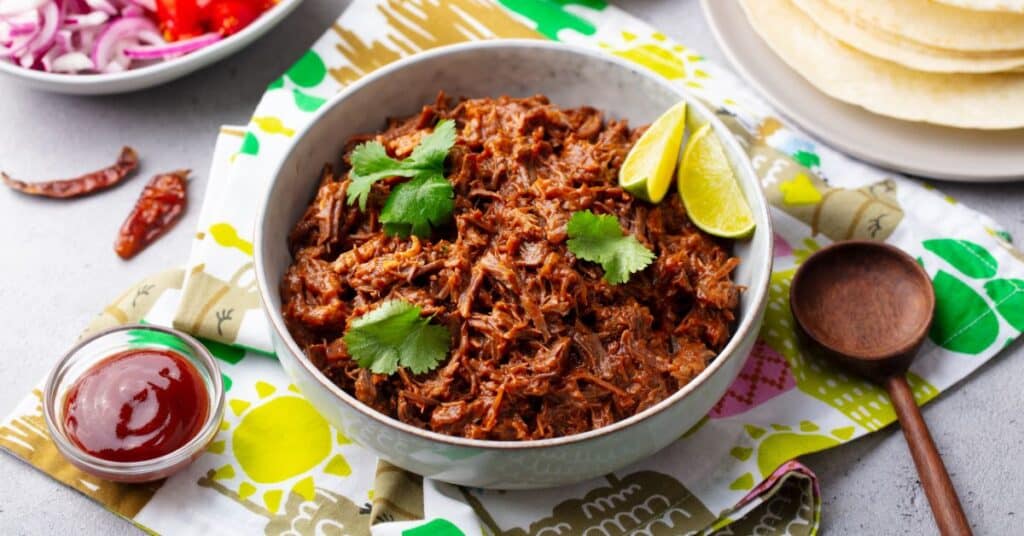
Definition of Chuck Roast
Chuck roast is a beef cut sourced from the chuck section of the cow, which encompasses the upper part of the shoulder. It’s known for a substantial amount of connective tissue and fat, which imbues it with flavor and moisture during the cooking process.
Cooking Chuck Roast
Ideal for slow cooking, chuck roast excels in recipes that require long, slow simmering or roasting. This method helps break down the tough tissues, resulting in meat that is tender and succulent. It’s a popular choice for dishes such as pot roasts, beef stews, and other hearty meals.
Why Choose Chuck Roast?
Chuck roast offers a deep, meaty flavor and a tender texture when cooked properly. It’s also a cost-effective option that can be used in a variety of dishes, making it a favored cut for family dinners and gatherings.
Understanding the Cut: Chuck Roast
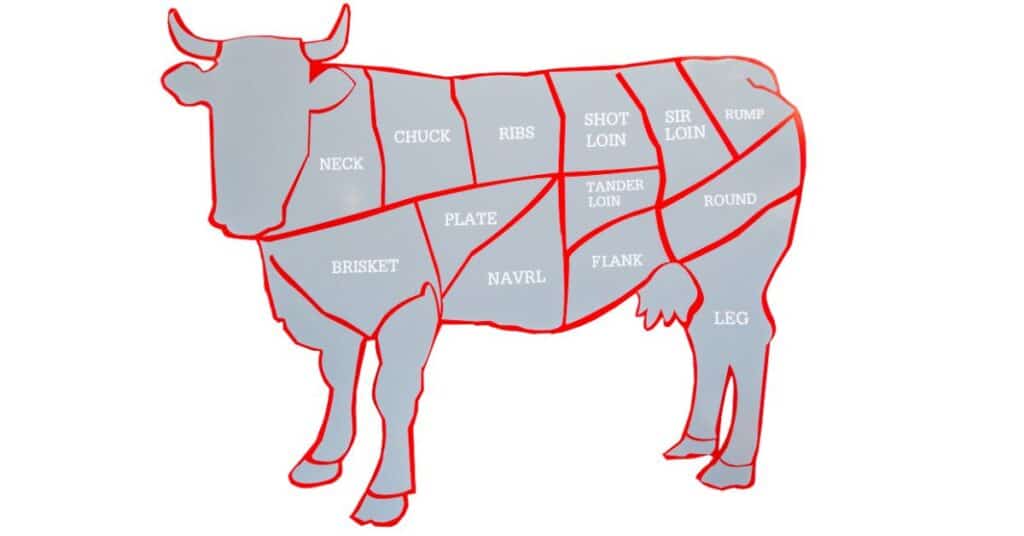
Anatomy of the Chuck Roast
Chuck roast is derived from the chuck section of the cow, positioned at the upper part of the shoulder, extending from the neck to the fifth rib. Therefore, this region is primarily composed of muscle groups that are heavily utilized, leading to a higher density of connective tissue and fat.
Characteristics and Cooking Recommendations
The presence of these tissues makes the chuck roast somewhat tougher but also more flavorful compared to leaner cuts. The fat marbling and connective tissues, primarily collagen, melt during prolonged cooking at low temperatures, such as braising or slow roasting. This process tenderizes the meat, infusing it with rich, deep flavors and creating a tender, pull-apart texture that is highly prized in dishes like pot roasts and stews.
Why Chuck Roast Stands Out
Chuck roast is celebrated for its robust beef flavor and adaptability in various recipes. Furthermore, it offers an excellent balance between cost and quality, making it a favored choice for family meals and gatherings where hearty, comforting dishes are preferred.
Benefits of Chuck Roast
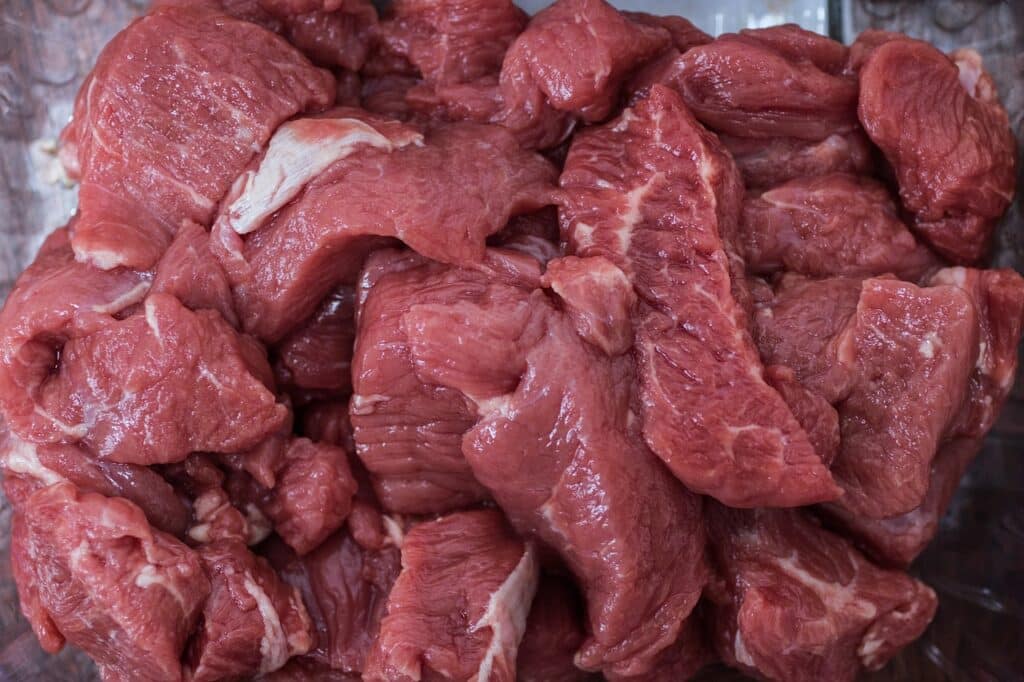
Nutritional Value
Chuck roast is not only rich in flavor but also offers significant nutritional benefits. It is a good source of essential nutrients such as protein, iron, and B vitamins. Protein helps in muscle repair and building, iron is crucial for forming red blood cells and preventing anemia, and B vitamins are vital for energy production.
Cost-Effectiveness
One of the major advantages of choosing chuck roast is its affordability. Compared to more premium cuts like ribeye or sirloin, chuck roast is generally less expensive, making it a budget-friendly option for families and individuals who enjoy beef dishes without a high price tag.
Versatility in Cooking
Chuck roast is extremely versatile and can be used in a variety of recipes. Whether it’s slow-cooked in a stew, braised in a pot roast, or shredded for sandwiches, this cut adapts well to different cooking methods. Its ability to absorb flavors makes it excellent for marinating with herbs and spices.
Ideal for Slow Cooking
The composition of chuck roast, with its higher fat and connective tissue content, makes it particularly well-suited for slow cooking. This cooking method allows the tough fibers to break down over time, resulting in tender, juicy meat that is full of flavor. This characteristic makes chuck roast a staple for comforting winter meals and hearty dinners.
Essential Ingredients for Beef Chuck Roast Recipes
Key Spices and Herbs
To bring out the best in a chuck roast, incorporating a blend of spices and herbs is crucial. For instance, key ingredients typically include:
- Salt and black pepper: Basic yet essential for enhancing the natural flavors of the beef.
- Garlic powder or fresh garlic: Adds a rich, aromatic depth.
- Onion powder or fresh onions: Contributes a sweet, savory note.
- Thyme and rosemary: These herbs complement the hearty flavor of the meat with their earthy and slightly floral notes.
Liquids for Braising
The cooking liquid is integral to a successful beef chuck roast recipe, as it helps to tenderize and flavor the meat during the slow cooking process. Popular choices include:
- Beef broth: Adds richness and a robust beefy base.
- Red wine: Provides acidity and complexity, enhancing the overall savoriness.
- Worcestershire sauce: Offers a tangy depth with a hint of sweetness.
Vegetables
Vegetables not only add flavor but also texture and nutrition to the dish. Common vegetables used in chuck roast recipes are:
- Carrots and celery: These classic vegetables provide sweetness and earthiness.
- Potatoes: Add heartiness to the meal and absorb flavors from the meat and spices.
- Onions: Layer additional savory notes into the dish.
Thickening Agents for Gravy
To create a rich and velvety gravy from the cooking liquids, thickening agents are often used:
- Flour or cornstarch: These are used to thicken the broth, resulting in a glossy, flavorful sauce that complements the tender meat.
Additional Flavor Enhancers
- Bay leaves: A couple of bay leaves can add a subtle layer of flavor that melds beautifully with other spices.
- Tomato paste: A small amount can intensify the umami character of the dish.
Utilizing these essential ingredients will help ensure your chuck roast is flavorful, tender, and satisfying, making it a centerpiece at any meal.
Must-Have Spices and Herbs for Beef Chuck Roast Recipes

Essential Seasonings for Flavor Enhancement
When preparing chuck roast, certain spices and herbs are indispensable for maximizing flavor. These include:
- Rosemary: Known for its aromatic and pine-like flavor, rosemary pairs wonderfully with beef, enhancing the meat’s natural flavors.
- Thyme: This herb adds a subtle earthiness with slight lemony notes, which complements the richness of chuck roast.
- Garlic: Whether minced fresh or used as powder, garlic infuses the roast with a pungent and savory quality that is essential for depth of flavor.
- Bay leaves: Adding bay leaves to the cooking liquid imparts a subtle, herbal complexity that elevates the overall taste of the dish.
- Black pepper: Freshly ground black pepper adds a spicy kick, balancing the hearty flavors of the beef.
- Paprika: This spice provides a sweet-smoky note, adding both color and a gentle warmth to the roast.
Additional Flavor Builders
To further enhance the roast, consider incorporating these supportive spices:
- Onion powder: It offers a concentrated burst of savory sweetness, intensifying the umami aspects of the beef.
- Mustard powder: This adds a tangy, sharp twist that cuts through the richness of the meat, bringing balance to the dish.
- Coriander: Ground coriander seeds lend a slightly floral, citrusy note that is surprisingly good with beef, brightening the heavier flavors.
Incorporating these spices and herbs into your Beef chuck roast recipes not only boosts the flavor but also complements the natural savoriness of the meat, ensuring a deliciously memorable meal.
Recommended Meats and Alternatives for Beef Chuck Roast Recipes
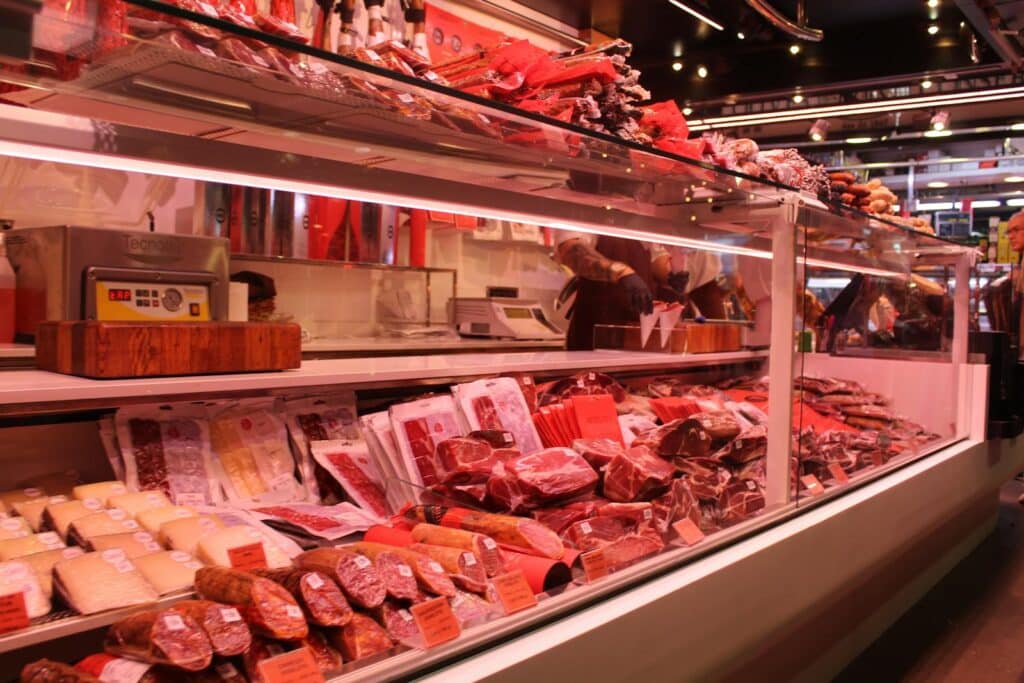
Primary Choice: Beef Chuck Roast
The classic choice for beef chuck roast recipes is, of course, beef chuck roast. This cut is preferred for its rich marbling and connective tissues that break down during slow cooking to create tender, flavorful meat. It’s ideal for traditional pot roasts, stews, and braised dishes.
Alternative Meat Options
Moreover, for those looking to explore beyond traditional beef chuck roast, there are several other meats that work well with the slow cooking methods typically used for chuck roast recipes:
- Pork Shoulder (Pork Butt): Similar in fat content and texture to beef chuck, pork shoulder is excellent for slow-cooked dishes. It becomes extremely tender and can be used in a variety of culinary styles, from pulled pork to carnitas.
- Lamb Shoulder: Another great alternative, lamb shoulder offers a richer, slightly gamey flavor that stands up well to robust spices and herbs used in beef chuck roast recipes. It is perfect for dishes with a Mediterranean or Middle Eastern flair.
- Veal Shoulder: For a more delicate flavor, veal shoulder can be a superb choice. It requires a similar cooking time and benefits greatly from the slow braising or stewing process.
- Chicken Thighs: For a lighter option, bone-in, skin-on chicken thighs can be used. While they cook faster than the traditional beef chuck, they offer a similar richness and are well-suited to slow cooker recipes.
Plant-Based Alternatives
For vegetarians or those reducing meat intake, there are also plant-based options that mimic the texture and heartiness of meat in beef chuck roast recipes:
- Jackfruit: This fruit is becoming increasingly popular as a meat substitute in savory dishes due to its texture, which is similar to shredded meat when cooked.
- Mushrooms: Particularly portobello or cremini mushrooms, provide a meaty texture and umami flavor that can stand in for beef in vegetarian stews or pot roasts.
- Seitan: Made from wheat gluten, seitan has a chewy, meat-like texture and absorbs flavors well, making it suitable for vegan and vegetarian roast recipes.
These meats and alternatives provide various options for preparing dishes traditionally made with beef chuck roast; thus, allowing cooks to cater to different dietary preferences and explore new flavors and textures.
Step-by-Step Cooking Methods for Chuck Roast
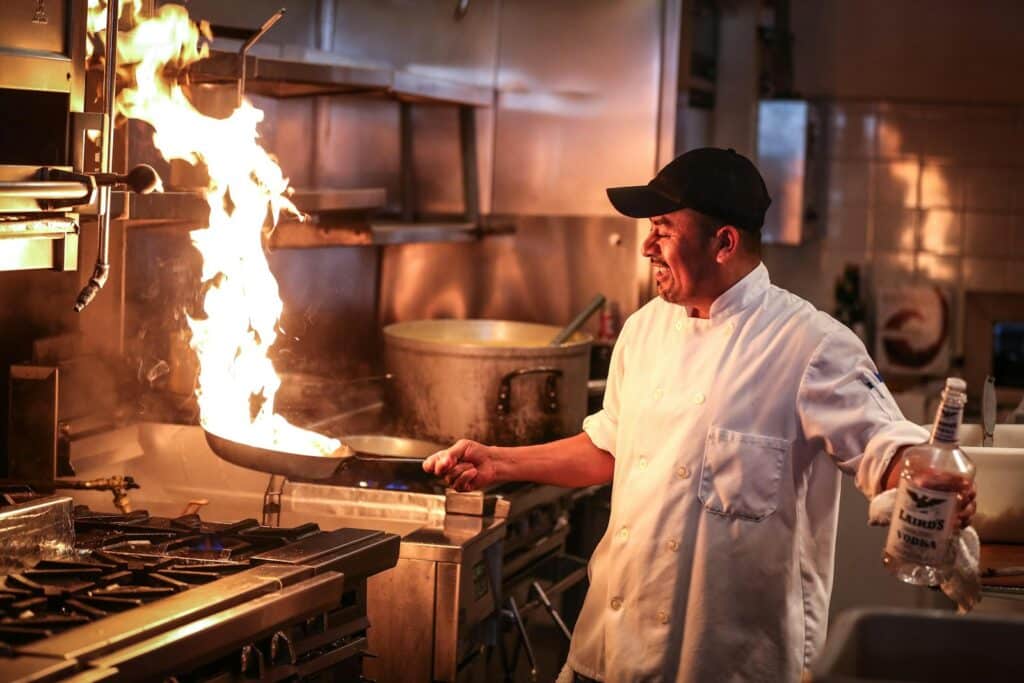
Preparing the Chuck Roast
- Season the Meat: Begin by generously seasoning your chuck roast with salt, pepper, and any other desired spices and herbs. This enhances the flavor of the meat.
- Sear the Roast: Heat some oil in a heavy skillet or Dutch oven over high heat. Sear the roast on all sides until it is nicely browned. This step is crucial as it locks in the flavors and juices.
Slow Cooking
- Assemble Ingredients: Place the seared chuck roast into a slow cooker. Add roughly chopped onions, carrots, and potatoes for a classic combination, or include other vegetables of your choice.
- Add Liquids and Seasonings: Pour in enough beef broth to cover at least half of the roast, along with additional seasonings like garlic, bay leaves, and a splash of Worcestershire sauce. This mixture will create a flavorful cooking environment and result in a rich gravy.
- Cook: Set your slow cooker to low and cook the roast for approximately 8 hours, or until it is tender and falls apart easily with a fork. The long cooking time allows the connective tissue to break down, making the meat juicy and tender.
Oven Roasting
- Preheat and Prepare: Preheat your oven to 325 degrees Fahrenheit (165 degrees Celsius). Place the seasoned and seared chuck roast in a roasting pan.
- Add Vegetables and Liquids: Surround the roast with vegetables and add broth or a mix of broth and wine, covering about one-third of the meat.
- Cover and Roast: Cover the pan tightly with foil or a lid to keep the moisture in. Roast for about 3-4 hours, or until the meat is tender. Baste the roast occasionally with the cooking liquids to keep it moist.
Braising
- Prepare the Braising Liquid: After searing the roast, remove it from the pan and set aside. In the same pan, sauté onions, carrots, and celery until softened. Stir in tomato paste and cook for a minute.
- Deglaze and Simmer: Add a splash of red wine or beef stock to deglaze the pan, scraping up any browned bits from the bottom. Return the roast to the pan.
- Slow Cook in the Oven: Cover the pan and transfer it to a preheated oven at 325 degrees Fahrenheit. Cook for about 3 hours, or until the roast is fork-tender.
Pressure Cooking (Instant Pot)
- Sauté in the Pot: Using the sauté function, brown the chuck roast on all sides directly in the pressure cooker. Remove the roast and briefly sauté onions and garlic.
- Cook Under Pressure: Return the roast to the pot along with broth, herbs, and vegetables. Secure the lid and set the cooker to high pressure for about 90 minutes.
- Natural Release: Allow the pressure to release naturally. This helps keep the roast moist and tender.
These methods provide various ways to cook a chuck roast, each yielding a tender, flavorful dish that makes the most of this hearty cut of beef.
Slow Cooking Techniques for Chuck Roast

Preparation and Setup
- Season the Meat: Begin by liberally seasoning the chuck roast with salt, black pepper, and other spices like garlic powder, onion powder, and dried herbs such as thyme or rosemary. These seasonings infuse the meat with flavor right from the start.
- Sear the Roast: Although optional, searing the chuck roast in a hot pan until each side is golden brown adds a depth of flavor by caramelizing the surface of the meat. This step enhances the final dish with rich, savory notes.
Choosing the Right Cooker
- Using a Slow Cooker: Place the seasoned and optionally seared chuck roast into the slow cooker. This method is ideal for those who prefer a “set it and forget it” approach, allowing the roast to cook gently over several hours.
- Using a Dutch Oven: If you prefer using an oven, place the prepared roast in a Dutch oven, which is excellent for retaining heat and moisture, ensuring even cooking.
Adding Liquids and Aromatics
- Layering Flavors: Add chopped onions, garlic, carrots, and celery around the roast. These vegetables will break down over the long cooking period, enriching the surrounding broth with flavor.
- Pour in Liquids: Add enough beef broth, wine, or a combination of both to come up about halfway up the sides of the roast. This liquid will steam and simmer the roast, making it tender and flavorful.
- Incorporate Additional Seasonings: Consider adding bay leaves, a sprig of rosemary, or Worcestershire sauce for added complexity in the taste profile.
Cooking Time and Temperature
- Low and Slow: Cook the chuck roast on the low setting for about 8 to 10 hours. The low temperature allows the connective tissue in the chuck roast to break down gradually, resulting in incredibly tender meat.
- Checking Doneness: The roast should be fork-tender by the end of the cooking time, easily shredding when pulled with a fork.
Finishing Touches and Serving
- Thicken the Gravy: Once the roast is cooked, you can remove it and strain the cooking liquids. Use a slurry of cornstarch and water to thicken this liquid into a rich, flavorful gravy.
- Rest the Meat: Let the chuck roast rest for a few minutes after cooking to allow the juices to redistribute throughout the meat, ensuring that each slice is moist and succulent.
- Serve: Serve the chuck roast with the thickened gravy and a side of vegetables cooked in the same pot for a complete meal.
These slow cooking techniques will help you achieve a delicious, tender chuck roast that is perfect for a comforting meal at home, requiring minimal active preparation time but delivering maximum flavor.
Oven Roasting Tips for Chuck Roast
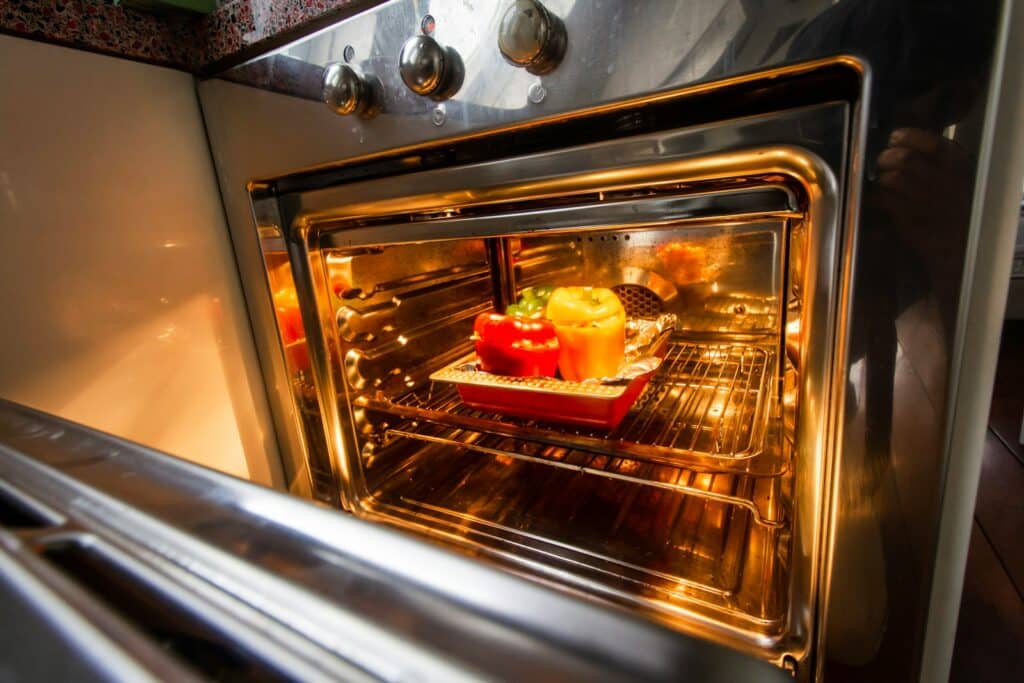
Preparing the Chuck Roast
- Season Generously: Start by seasoning the chuck roast liberally with salt, pepper, and other favorite herbs and spices such as garlic powder, onion powder, thyme, and rosemary. This not only enhances flavor but also helps to form a delicious crust on the meat during roasting.
- Sear for Flavor: Before roasting, sear the chuck roast in a hot skillet with a bit of oil until all sides are browned. This process caramelizes the surface of the meat, adding a depth of flavor that enhances the overall dish.
Roasting Setup
- Preheat the Oven: Make sure your oven is preheated to the right temperature—325 degrees Fahrenheit (165 degrees Celsius) is ideal for slow-roasting beef.
- Use a Roasting Rack: Place the seared chuck roast on a roasting rack inside a roasting pan. The rack elevates the meat, allowing hot air to circulate around it for even cooking and a crispier exterior.
Adding Liquids and Vegetables
- Create a Moist Environment: Pour beef broth, wine, or a combination of both into the bottom of the roasting pan, but not over the meat. The liquid will create steam in the oven, which helps the roast stay moist while cooking.
- Include Aromatics: Surround the roast with aromatic vegetables like carrots, onions, and celery. These will roast alongside the meat, adding flavor to the roast and the pan juices which can be turned into a gravy.
Cooking Time and Temperature
- Roast Slowly: Cook the chuck roast slowly in the preheated oven. Depending on the size of the roast, this can take anywhere from 3 to 4 hours. The low and slow approach is key to breaking down the tough fibers in the chuck roast, making it tender.
- Check Internal Temperature: Use a meat thermometer to check the doneness of the roast. For a tender chuck roast, aim for an internal temperature of around 190 to 195 degrees Fahrenheit (87 to 90 degrees Celsius). At this temperature, the connective tissues have broken down properly.
Resting and Serving
- Let It Rest: Once removed from the oven, cover the chuck roast loosely with aluminum foil and let it rest for about 15 to 20 minutes. Resting allows the juices to redistribute throughout the meat, ensuring that it is juicy and flavorful when sliced.
- Serve with Gravy: Use the pan drippings to make a gravy. Strain the drippings, skim off the excess fat, and then thicken with a little flour or cornstarch cooked into a roux. Adjust seasoning as needed and serve it hot over the sliced chuck roast.
Following these tips will help you achieve a perfectly roasted chuck roast that is flavorful, tender, and a delight to serve. This method highlights the meat’s natural flavors while ensuring it remains succulent and moist.
Chuck Roast Recipes

This traditional recipe for a beef chuck roast uses simple ingredients to enhance the natural flavors of the meat, making it a perfect dish for a comforting family dinner. Moreover, here’s how to prepare a classic beef chuck roast that is tender, flavorful, and satisfying.
Herb-Infused Slow Cooker Chuck Roast
Ingredients:
- 3-4 lbs beef chuck roast
- Salt and black pepper to taste
- 2 tablespoons olive oil
- 1 large onion, chopped
- 3 carrots, peeled and sliced
- 3 celery stalks, chopped
- 4 garlic cloves, minced
- 3 cups beef broth
- 1 tablespoon Worcestershire sauce
- 1 teaspoon dried rosemary
- 1 teaspoon dried thyme
- 2 bay leaves
Instructions:
- Prepare the Roast: Season the chuck roast generously with salt and pepper.
- Sear the Meat: In a large skillet, heat olive oil over medium-high heat. Add the chuck roast and sear on all sides until browned, about 3-4 minutes per side.
- Add to Slow Cooker: Transfer the seared roast to a slow cooker. In the same skillet, sauté onion, carrots, celery, and garlic until softened, then add them to the slow cooker.
- Add Liquids and Seasonings: Pour beef broth and Worcestershire sauce over the meat. Sprinkle with rosemary, thyme, and add bay leaves.
- Cook: Cover and cook on low for 8 hours or on high for about 4-5 hours, until the meat is tender and falls apart easily.
- Serve: Remove the bay leaves and shred the meat slightly with forks. Serve hot with the vegetables and broth.
Oven-Baked Chuck Roast with Vegetables
Ingredients:
- 3-4 lbs beef chuck roast
- Salt and freshly ground black pepper
- 2 tablespoons vegetable oil
- 2 onions, quartered
- 4 carrots, cut into 2-inch pieces
- 3 potatoes, peeled and quartered
- 2 cups beef broth
- 1 tablespoon tomato paste
- 1 teaspoon garlic powder
- 1 teaspoon onion powder
- 1 teaspoon paprika
Instructions:
- Preheat Oven: Preheat your oven to 325°F (165°C).
- Season the Roast: Rub the chuck roast with salt, pepper, garlic powder, onion powder, and paprika.
- Sear the Roast: Heat vegetable oil in a large oven-proof Dutch oven over medium-high heat. Sear the roast on all sides until browned, about 4 minutes per side.
- Add Vegetables and Broth: Arrange the onions, carrots, and potatoes around the roast. Mix tomato paste into the beef broth and pour over the meat and vegetables.
- Roast: Cover the Dutch oven with a lid or aluminum foil and place in the oven. Roast for about 3 hours, or until the meat is tender and the vegetables are cooked.
- Serve: Remove from the oven, let the roast rest for a few minutes, then slice and serve with the cooked vegetables and juices from the pan.
These recipes allow you to enjoy the rich flavors and tender texture of chuck roast without the need for any alcoholic ingredients, making them suitable for family meals and gatherings where alcohol-free dishes are preferred. Moreover, they are perfect for accommodating diverse dietary preferences and ensuring everyone at the table can indulge in delicious comfort food.
Classic Beef Chuck Roast Recipe
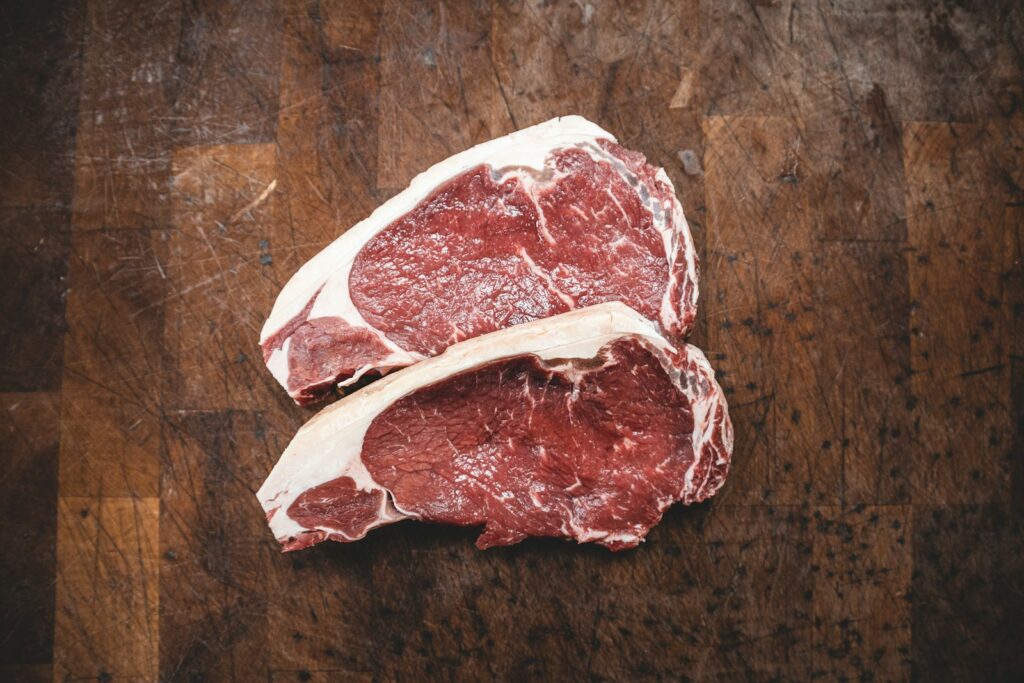
This traditional recipe for a beef chuck roast uses simple ingredients to enhance the natural flavors of the meat, making it a perfect dish for a comforting family dinner. Additionally, it’s easy to prepare and sure to please everyone at the table. Here’s how to prepare a classic beef chuck roast that is tender, flavorful, and satisfying.
Ingredients:
- 3-4 lbs beef chuck roast
- 2 tablespoons olive oil
- Salt and freshly ground black pepper to taste
- 2 onions, sliced
- 4 carrots, peeled and cut into chunks
- 3 garlic cloves, minced
- 3 cups beef broth
- 1 tablespoon Worcestershire sauce
- 2 bay leaves
- 1 teaspoon dried thyme
- Optional: Fresh herbs like rosemary or parsley for garnish
Instructions:
- Prep the Roast:
- Pat the chuck roast dry with paper towels. This helps in getting a good sear.
- Season generously with salt and black pepper on all sides.
- Sear the Roast:
- Heat olive oil in a large Dutch oven or heavy-bottomed pot over medium-high heat.
- Once the oil is hot, add the chuck roast and sear it for about 4-5 minutes on each side, or until a golden brown crust forms. Remove the roast from the pot and set aside.
- Sauté Vegetables:
- In the same pot, add the sliced onions and carrots. Sauté for about 3-4 minutes until the onions begin to soften.
- Add the minced garlic and cook for an additional minute, stirring frequently to prevent burning.
- Deglaze and Simmer:
- Pour in the beef broth to deglaze the pot, using a wooden spoon to scrape up any browned bits from the bottom of the pot.
- Stir in the Worcestershire sauce, bay leaves, and dried thyme.
- Cook the Roast:
- Return the seared roast to the pot. Bring the liquid to a simmer, then reduce the heat to low.
- Cover the pot with a tight-fitting lid and let it simmer for about 3-4 hours, or until the roast is very tender and falls apart easily with a fork.
- Serve:
- Once the roast is tender, remove it from the pot and let it rest for a few minutes before slicing.
- Serve the slices of chuck roast with the cooked vegetables and spoon over some of the cooking juices.
- Garnish with fresh herbs like rosemary or parsley if desired.
Tips for the Perfect Roast:
- Low and Slow: Cooking the roast at a low temperature for several hours allows the tough fibers in the meat to break down, resulting in a tender texture.
- Resting Time: Allowing the roast to rest before slicing helps retain the juices within the meat, ensuring it remains moist and flavorful.
This classic beef chuck roast recipe embodies the essence of comfort food, perfect for a weekend family meal or a special occasion, providing a warm and hearty dish that is both delicious and satisfying.
Conclusion
In concluding our exploration of Beef chuck roast recipes, we’ve uncovered the versatility and delightful flavors that this cut of beef can bring to the table. In short, from the rich, slow-cooked tenderness of a traditional pot roast to the innovative twists that accommodate various dietary preferences and tastes, chuck roast stands as a testament to the adaptability and heartiness of classic comfort foods.
By understanding the basic properties of chuck roast, experimenting with different spices and cooking methods, and pairing it with complementary side dishes, you can elevate this humble cut into a meal that satisfies and impresses. Whether you’re a seasoned chef or a novice in the kitchen, the recipes and tips provided here aim to inspire and guide you through creating delicious, comforting meals that celebrate the essence of home-cooked goodness.
So, go ahead and try your hand at mastering chuck roast dishes. With each meal, you’ll not only nourish your body but also enrich your culinary skills and enjoy the pleasures of a well-made roast. Happy cooking!
For those interested in exploring further complementary side dishes, consider reading about enhancing your baked beans, which make a perfect accompaniment to a hearty chuck roast.
FAQs
Which cooking method is best for a chuck roast?
The best cooking method for a chuck roast is typically slow cooking. Methods such as braising, slow roasting, or using a slow cooker are ideal because they allow the meat’s connective tissues to break down over several hours, resulting in a tender, flavorful dish. Slow cooking in a moist environment is particularly effective, as it helps keep the meat juicy and tender.
What can I use a chuck roast for?
Chuck roast is incredibly versatile and can be used in various dishes. It is most commonly used for pot roasts, where it is cooked slowly with vegetables and broth. Moreover, it’s also excellent for making beef stews, shredded beef for tacos or sandwiches, and even beef bourguignon. Additionally, the robust flavor and tender texture of chuck roast make it suitable for any recipe that requires slow cooking.
Does chuck roast get more tender the longer you cook it?
Yes, chuck roast does get more tender the longer you cook it, up to a point. Additionally, the long, slow cooking process allows the connective tissues and fats within the chuck roast to break down, which tenderizes the meat. However, it is important to cook it at a low temperature to prevent it from drying out. Once the meat reaches the point where it can be easily pulled apart with a fork, it has typically achieved optimal tenderness.
How many hours do you cook a chuck roast?
The cooking time for a chuck roast depends on the cooking method and the size of the roast. Generally, when slow-cooking in an oven at around 325 degrees Fahrenheit (about 163 degrees Celsius), a chuck roast should cook for about 45 minutes per pound. In a slow cooker, a chuck roast can take anywhere from 4 to 8 hours on low, depending on the size. Furthermore, cooking it slowly allows the meat to become tender and juicy, resulting in a mouthwatering dish. It’s essential to ensure that the internal temperature of the roast reaches at least 145 degrees Fahrenheit (63 degrees Celsius) for safety and tenderness.

